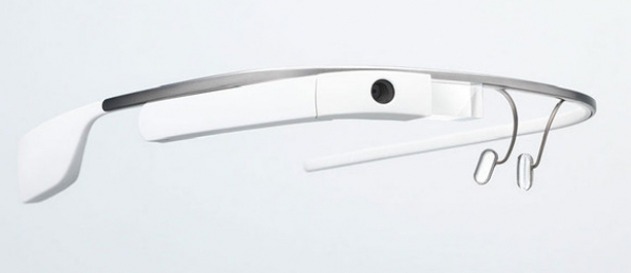
By now you’ve likely heard of Google Glass, the purportedly revolutionary “smart” eyewear that will change the Way We Live forever. Google’s pair of high-tech spectacles use a tiny prism that beams imagery onto the retina of the wearer (click here for a fuller description of the technology), allowing the user to see floating updates on the weather from just looking at the sky, follow GPS maps that hover over real roads while driving and get immediate translations of foreign languages thus allowing for easy navigability of, say, a Mongolian farmers’ market. Many of these features will be activated not by the user, but by the glasses themselves, which will be set to anticipate and transmit additional information their owner might need at any given time. They’re calling this experience “augmented reality.”
Google Glass will also make your every move trackable and collectible by various unseen nefarious powers. Given that so much of the spectacles’ activity is sparked by things you are looking at, it’s about as close as we’ve yet come to letting Big Data miners directly into our brains. While the upsides of the technology are exciting, the potential downsides suggest this:
Along with the aforementioned, Google Glass also allows for instant picture taking (no more fumbling with that iPhone password!) and the recording of moving images. The potential to film or photograph people without their knowledge is already leading to altercations and bans, as well as widespread excitement within the porn industry. And, as with every other technology yet invented that allows for the capture of moving images, it’s led to some hesitant, awkwardly made short films. These two, allegedly the first made, come courtesy of a filmmaker named Boonsri Dickinson:
The use of the first person in cinema isn’t new--it’s been employed by every cruddy found footage film from Blair Witch to Cloverfield, and cinema’s history is littered with plenty of outré technical exercises attempting to capture this perspective, including the dancing crane rigs used to suggest a free-floating angelic viewpoint in Gaspar Noé’s execrable Enter the Void.
What is new in Google Glass filmmaking is not just the ease of capturing first person images, but the ways in which wearing the camera on your face creates a different kind of relationship to that which is being filmed. Watch any professional cinematographer operate a camera and the first thing you’ll notice is their stillness and the smoothness of their highly controlled motions through space. This is a function of holding an actual piece of machinery up to one’s eye and focusing one’s attention through a highly delineated viewfinder to frame an image.
With Google Glass, the viewfinder is pretty much one’s own range of vision, always an ever-shifting field. The camera is not held near one’s body, but rather is the body, a fleshy bag, that can only keep itself fully still with maximum effort. Dickinson’s two film experiments are most interesting as records of slight adjustments in sight lines, head shakes, bobbles while walking--that constantly shuddering perspective that our brains smooth out for our minds so that we can function in the real world.
The actual contents of both films are moot, at best. “The Kiss” is said to honor the epochal screen smootch Thomas Edison captured decades ago, but merely just confuses. Without an anchoring perspective, it’s nearly impossible to know with who and where we are, and Dickinson’s film jumps between its two lovers so frequently in its first act that it totally disorients. “A Cyborg in New York” is a barely comprehensible piece of sci-fi romance, but at least the subject matter, jumpy Google Glass imagery, and some well-placed visual effects come together to hint at how this new technology might yet positively impact moviemaking.
Dickinson’s films are curios at best, but they’re surely not the last we’ll see of their ilk. They may be the first out of the gate, but we’ll still have to wait for something filmed with Google Glass that comes bearing the weight of this original cinema first:
TOPICS